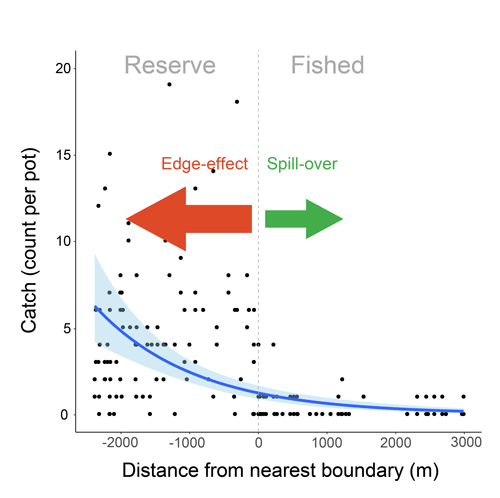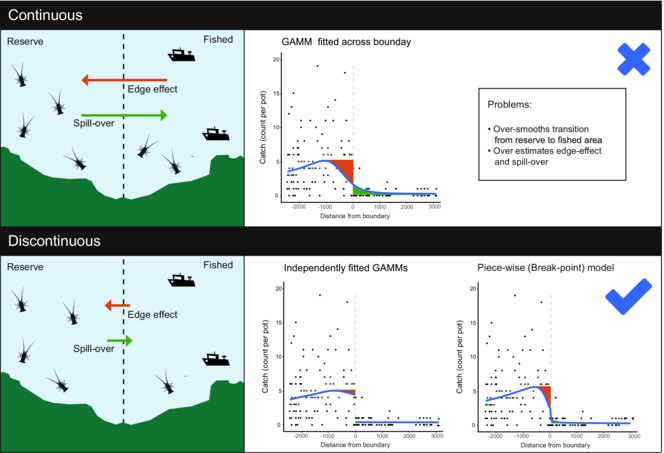In their new study, Benn Hanns and Nick Shears evaluate common modelling assumptions used to assess the extent of spill-over and edge effects of marine species from protected-areas. Their findings highlight the potential for erroneous conclusions about these phenomena when inappropriate modelling strategies are used.
Species dynamics in marine reserves
Increases in exploited species within marine reserves can benefit adjacent fished areas as individuals move or ‘spill-over’ across reserve boundaries. At the same time, the capture of these individuals can deplete abundances directly inside reserve boundaries, creating what are known as boundary ‘edge-effects’.
For marine scientists, the spatial extents of spill-over and edge-effects can provide valuable information on the performance, effectiveness, and overall impact of a marine reserve. These effects can be measured by assessing changes in a species abundance relative to distances from marine reserve boundaries.
The problem
To date, abundance gradients across reserve boundaries have been assumed to be gradual and quantified using continuous modelling strategies, but the validity of this assumption has not been tested. Incorrectly assuming a continuous relationship risks over-smoothing transitions from high abundance protected areas and low abundance non-protected areas leading to overestimates of spill-over and edge effects.
In this study, we evaluated different modelling approaches for investigating edge-effects and spill-over from gradients in abundance of New Zealand rock lobster (Jasus edwardsii) across marine reserve boundaries.
Findings
While the shape of gradients across marine reserve boundaries were expected to vary depending on species mobility and fishing intensity on reserve boundaries, our findings demonstrated how different modelling strategies can lead to dramatically different interpretations.
Rapid changes in abundances across reserve boundaries were better represented by discontinuous models and spatial variation within the reserve and fished areas was better represented when either area was modelled independently. Using appropriate modelling strategies, we found evidence of edge-effects and spill-over was low or absent. In contrast, standard continuous modelling approaches depicted gradients which overestimated and exaggerated edge-effects and spill-over.
We strongly recommend that future studies evaluating such effects should compare several different modelling strategies to ensure appropriate model fits and more accurate conclusions.
Read the full article, “Modelling Spatial Variation in an Exploited Species Across Marine Reserve Boundaries” in Journal of Applied Ecology


